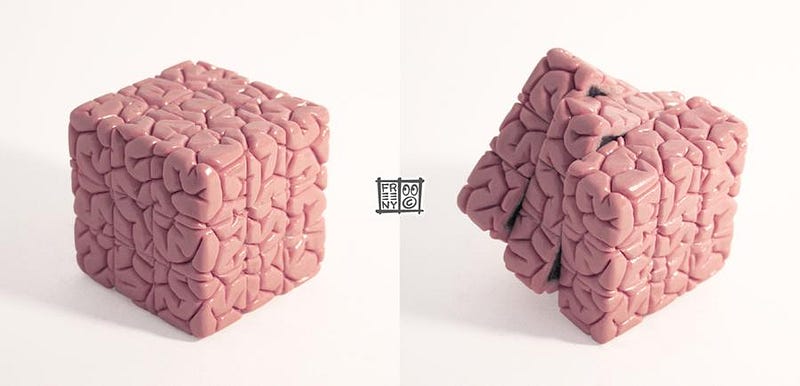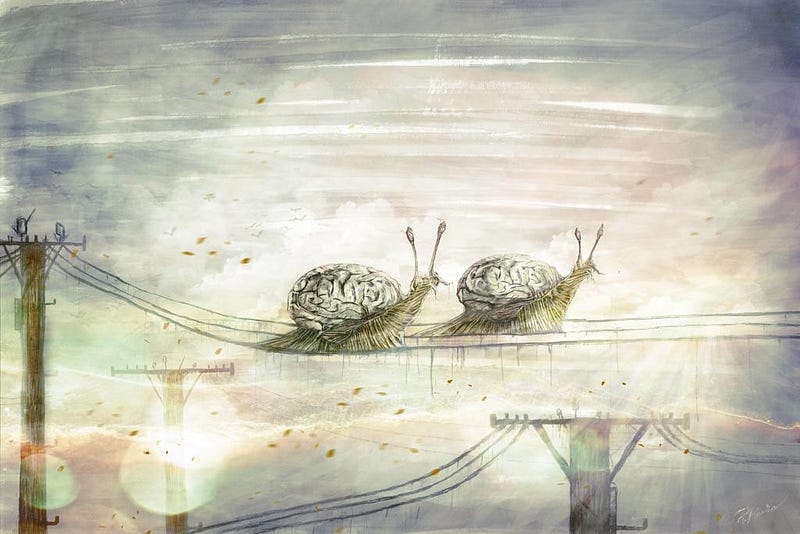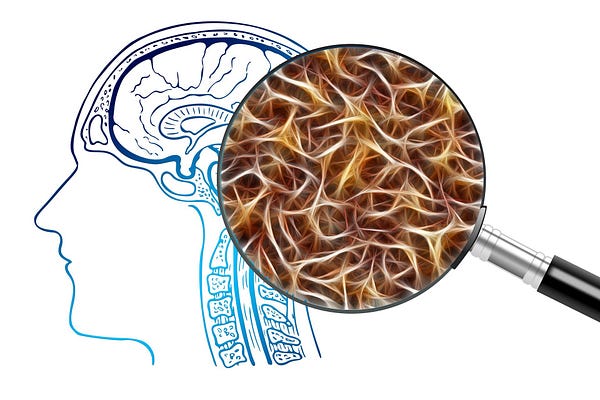
“All the experiences in your life- from single conversations to your broader culture- shape the microscopic details of your brain. Neurally speaking, who you are, depends on where you’ve been. Your brain is a relentless shape-shifter, constantly rewriting its own circuitry and because your experiences are unique, so are the vast, detailed patterns in your neural networks. Because they continue to change your whole life, your identity is a moving target; it never reaches an endpoint.” ― David Eagleman
During times of significant change, our brains reorganise and restructure neural connections to adapt to new information and new stimulation. As we undergo new experiences, frequently used neural pathways (synapses) are reinforced. This is how habits are formed and this is why we must perform a new skill regularly to make it “stick”. The neural pathways are strengthened over time. Consider this like the grooves on a vinyl record, the more often the record is played, the deeper the grooves become.
“Synaptic Pruning” happens when we no longer use certain pathways. Previously used neural pathways are discarded when they are no longer considered as important. Why are they no longer considered as important? When they are not used frequently or at all. Our brain accounts for 2% of our body mass but uses 20% of our energy, so it needs to operate efficiently, synaptic pruning enhances this efficiency. Your brain understands if you are not giving a certain pathway any attention, then it is obviously not that important to your survival. That makes sense. What also makes sense is if we feed ourselves new information, we can create new mindsets and new realities.
This Thursday Thought argues the provision and positioning of new information and new experiences is an essential leadership skill. To forge new mindsets we need to forge new mental pathways because these new pathways empower to new realities.
The Yes Brain Organisation: Where Attention Goes Energy Flows
If we can shape our brains through experiences and new information, then it is reasonable to consider that the people who provide information and guidance in life hold huge responsibility. This includes parents, teachers, coaches and leaders of every kind.
Our guest on this week’s innovation show is acclaimed parental expert Dr Tina Payne Bryson. Tina is the author of many best-selling books including the focus of the show “The Yes Brain Child”. In her book, co-authored by previous innovation show guest Dan Siegel M.D. Tina tells us the leader is constantly sculpting the organisational brain, just as a parent would sculpt the brain of a child. “The experiences we provide don’t just influence the minds and characters of others. The experiences we provide activate brain activity. Where we orient someone’s attention to repeatedly makes neurons fire and wire, so we are sculpting people’s brains.”
Where the leader forges a path, the people follow. If a leader demonstrates that short-term goals and shareholder value are the main priority in an organisation, then the people will pay more attention to short-term goals and shareholder value.
If a leader demonstrates that innovation and creativity are important in an organisation, then the people will pay more attention to innovation and creativity. By paying more attention to innovation and creativity you will forge new mental pathways within the organisational brain. Where the leadership orients attention is where the organisational energy will flow. This is why storytelling and defining a corporate North Star are so essential. Many transformation initiatives fail because they focus exclusively on the mechanical aspects at the expense of the human aspects of the business. You cannot change business models until you change mental models. Cultivating a “Yes Brain” is a great way to change mental models.
Some of the attributes of a “Yes Brain” child include the willingness to try new things and the understanding that failure is part of any journey. From a corporate transformation or innovation perspective, these are exactly the skills required to facilitate change. If your people demonstrate these attributes, then there is a higher likelihood that your organisation will be open to transformation and reinvention.
In contrast, an organisation characteristic of a “No Brain” goes on the offence, pushing back on new knowledge and fighting off input from others. Attacking and rejecting are ways the “No Brain” deals with the world. For those of you working in organisational change or innovation, you will have encountered No brains. In a “No brain” state new ideas will be rejected and no amount of townhalls nor post-it notes will change that.
It is our job as leaders, coaches, parents and managers to cultivate the brains of those people we are responsible for. This is a huge responsibility, but an essential one.
“The mind, once stretched by a new idea, never returns to its original dimensions.” ― Ralph Waldo Emerson
Episode 171 of the Innovation Show is “The Yes Brain Child: Help Your Child be More Resilient, Independent and Creative”, with Dr Tina Payne Bryson.
Children can often act out or shut down when faced with a setback or a tricky issue like homework, food or screen time. This is what our guest — an acclaimed parenting expert — calls the ‘No Brain’ response. But you can help your child develop the ability to cope, solve their own problems and thrive by nurturing their ‘Yes Brain’
A “Yes Brain” is what we need in business environments today. A “Yes Brain” is open to possibility and complexity and has the ability to control emotion and recognise when fear is a blocker.
We discuss:
- Innovation
- Resilience
- Flexibility
- Creativity
- Down Time
- Packed Schedules
- Rigidity
Have a listen:
Soundcloud https://lnkd.in/gBbTTuF
Spotify http://spoti.fi/2rXnAF4
iTunes https://apple.co/2gFvFbO
Tunein http://bit.ly/2rRwDad
iHeart http://bit.ly/2E4fhfl
More about Tina here:

